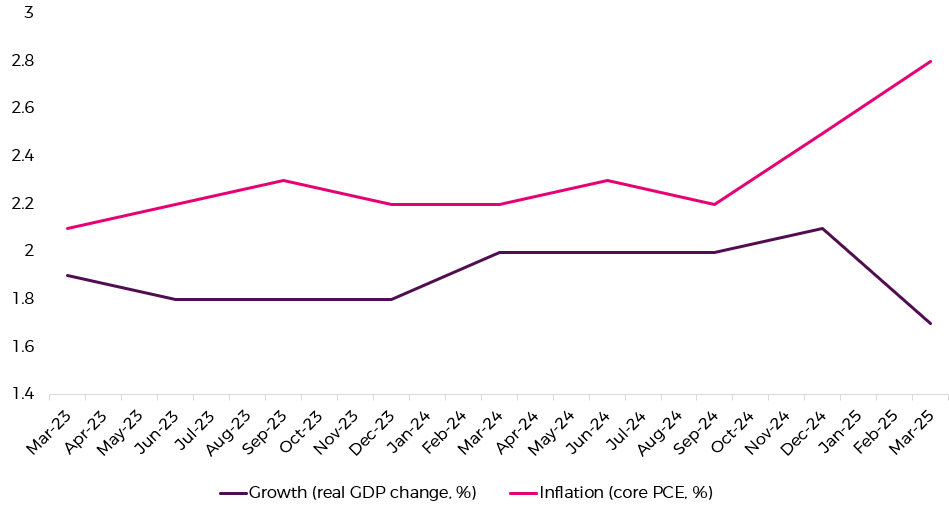
With stagflation the stuff of central bank nightmares, how will they approach the many cross currents? In this week’s Perspectives, Fund Manager Anthony Rayner, shares how being nimble and pragmatic in this uncertain environment is as important as ever.
Stagflation is a concept of which central banks’ nightmares are made: do they raise rates to bring inflation under control or do they cut rates to support fading growth?
As ever, there is much for central banks to think about and there are many cross currents. The last thirty years was an exception, with central banks being allowed to focus on buoying growth and not having to worry so much about inflation. Over the longer term though, rarely has there been the luxury of just focusing on either growth or inflation for such an extended period.
Indeed, fast forwarding to the present, as the chart shows, the US Federal Reserve saw stagflationary risks rising at their latest meeting, with inflation expectations increasing and growth expectations falling. Chair Powell noted that global trade uncertainty had risen, though their working assumption was that the impact of tariffs on inflation would be “transitory”, a word they used back in 2021, which backfired as it caused confusion.
US Fed forecast for inflation and growth in 2025: inflation up, growth down

Source: Bloomberg 01.03.2023 – 01.03.2025
It seems that trade uncertainty is also feeding through to weaker US growth, namely in the survey data, though it has yet to be seen clearly in the hard data. Similarly, surveys of long term US inflation expectations are rising, though the hard inflation prints are not. The Fed will be particularly concerned if long term inflation expectations become unanchored and that will be key as to whether they can focus on fading growth, if that is indeed what is eventually seen in the hard data.
Closer to home we see UK inflation proving somewhat sticky, especially services inflation which best reflects domestic inflationary pressures. At the same time, UK growth is pretty anemic, so stagflationary risks are very
relevant here too. This is important in terms of debt dynamics for the UK: the debt pile is large and debt servicing becomes more difficult if growth slows and inflation pushes gilts yields higher.
Stepping back, the global realignment of trade, finance and security has increased uncertainty in the near term. Indeed, as we have stated before, changing the rules of a system as complicated as the global economy will have unintended consequences, for example adding to stagflationary risks. As a result, being nimble and pragmatic when managing portfolios will be as important as ever.
Anthony Rayner
Premier Miton Macro Thematic Multi Asset Team
